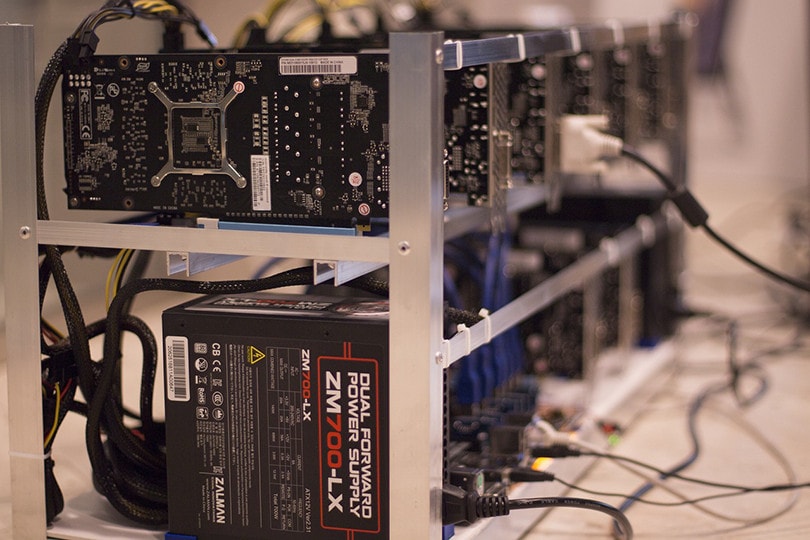How Much Energy Does Bitcoin Mining Use? Is It Wasteful?
-
Pete Ortiz
- Last updated:

Most people probably know that the cryptocurrency industry is booming. In fact, Bitcoin, the world’s largest cryptocurrency, was worth a staggering $69,000 in November 2021.
Bitcoin and other cryptocurrencies offer a level of convenience and anonymity that traditional currency forms simply can’t match. But while the world slowly embraces digital currencies, there’s the tiny question of how much energy Bitcoin miners use to mine Bitcoin.
The answer is massive. Bitcoin mining uses up more energy than some nations do in a year! Read on to learn more.
What Is Bitcoin?

Bitcoin is a cryptocurrency established by an unknown group or person known as Satoshi Nakamoto. This digital currency exists outside the conventional currency system, where governments, banks, and other financial institutions control the currency flow. With Bitcoin, the digital currency exists in a decentralized platform with no central pillar of control.
Bitcoin uses an innovative technology called a blockchain. This is basically a decentralized ledger shared securely over a network. The technology allows the sharing of transactional data from multiple sources. Data is broken up into blocks, which are groups of processed transactions. These blocks are chained together and distributed over the network, using cryptographic hashers as identifiers.
What makes a blockchain such a standout piece of technology is that it’s immune to duplication, alteration, or unauthorized deletions. All the information in the blockchain is secure and protected. While you can share all information on the blockchain, you cannot alter it.
What Is Bitcoin Mining?
We mentioned that Bitcoin runs on a decentralized network that tracks every transaction called a blockchain. Computers in the network verify and process the said transactions. Whenever this happens, new Bitcoins are created or mined. The computers in the network will process the information in exchange for payment in the form of Bitcoin.
To successfully add a block to the blockchain, the miners (computers) must solve incredibly complex math problems. This will require the use of very powerful computers, which, in turn, consume a lot of electricity.
Miners can only complete mining once they get the correct answer or an answer close to the correct answer to the math problem. When the miners guess the correct answer, this is known as “proof of work.”
How Much Energy Will You Need to Mine Bitcoin

Bitcoin is an incredibly energy-intensive process. In fact, Bitcoin mining across the world consumes a whopping 130 terawatt-hours (TWh) of energy per year, more than what some countries use annually.
When Bitcoin first started, mining didn’t consume nearly half as much energy as it does today. But as more people hopped on the bandwagon, so did the math puzzles become harder. The harder the puzzles, the more computational power required, and the more energy the ASIC computers used for mining consume.
The process of guessing the correct answer is extremely energy-intensive. In fact, it can only be accomplished by a special type of computer known as ASIC (Application-Specific Integrated Circuit) computers. These computers cost upwards of $10,000 and consume tons of electricity. Miners that can add a blockchain get 6.25 Bitcoins as a reward. With one Bitcoin currently at $19,671.10, this equals $122,942.77.
As mentioned earlier, Bitcoin mining consumes huge amounts of energy. In fact, a single Bitcoin transaction consumes about 1,499 Kilowatt-hours (KWh) of energy. To give you some perspective, here’s how Bitcoin mining’s energy consumption compares to basic household appliances.
| Electrical Appliance | Yearly Energy Consumption |
| Single Bitcoin Transaction | 1,499 |
| Worldwide Bitcoin mining | 130,000 |
| Central air conditioner (2 ton) | 17,400 |
| Refrigerator | 2460 |
| Dishwasher | 360 |
| Microwave | 192 |
| Television | 324 |
| Washing machine | 108 |
What Is the Environmental Impact of Cryptomining?

With so much power used for crypto mining, one can only wonder about the extent of environmental damage caused. It’s no secret that the widespread mining of Bitcoin worldwide has had devastating consequences on the environment.
Cryptomining was responsible for 27.4 million tons of carbon dioxide between mid-2021 and 2022 in the US alone. To give you some perspective, that’s thrice the amount of carbon dioxide produced by the biggest coal plant in the US in a year.
However, the detrimental effects of Bitcoin mining don’t just stop at electricity consumption. Bitcoin mining is a worldwide race, where miners from across the globe are racing to solve these complex math problems. In most cases, when miners don’t succeed, they simply throw away their hardware.
Remember, certain computer parts contain cadmium, beryllium, mercury, and lithium. All of which are incredibly toxic to our ecosystem. Careless discarding of these parts also contributes to environmental degradation.
What’s the Solution to the Bitcoin Mining Energy Problem?
With so much energy being consumed and the environment going to shambles, it’s easy to rally against Bitcoin mining to preserve our planet’s future. However, such a solution would be ill-gotten and impulsive.
It’s hard to deny the utility of Bitcoin and other cryptocurrencies, and going back to centralized currency systems would be retrogressive. Thankfully, there are other solutions that could nip the energy problem in the bud. They include the following.
Switching to Renewable Energy

Renewable energy is energy derived from renewable energy sources like the sun, wind, and water. Unlike non-renewable energy sources, renewable energy sources don’t get depleted and don’t produce carbon emissions. A switch to renewable energy for Bitcoin mining means the entire mining process will emit net-zero carbon emissions.
Adoption of Pre-Mining
Certain cryptocurrencies have resorted to pre-mining to decrease the detrimental impact of crypto mining on the environment. Pre-mining is where instead of doing traditional mining, a fixed amount of cryptocurrency is injected into that specific crypto economy.
The central authority will regulate the amount of crypto entering the economy, depending on factors like world events and the general business climate.
Substituting Proof of Work With Proof of Stake
Proof of stake is a different approach to proof of work for verifying Bitcoin ownership that uses minimal resources. With proof of stake, people can front a small amount of Bitcoin to get into a lottery. The lottery prize is a chance to verify transactions.
This reduces the likelihood of approving any fraudulent transactions, given that doing so would only devalue a currency that you’ve staked in. It eliminates the competitive element of Bitcoin mining, saving both energy and the environment.
Cryptomining Doesn’t Have to Destroy the Planet
Clearly, crypto mining uses up enormous amounts of energy and destroys the environment in the process. However, that doesn’t have to be the case. With innovative alternatives to crypto mining, people no longer have to use a ton of energy to mine Bitcoin and other cryptocurrencies. If more practical crypto mining methods are adopted, we could soon see Bitcoin and other cryptocurrencies replacing our current currency system.
Featured Image Credit: rebcenter-moscow, Pixabay
Contents



